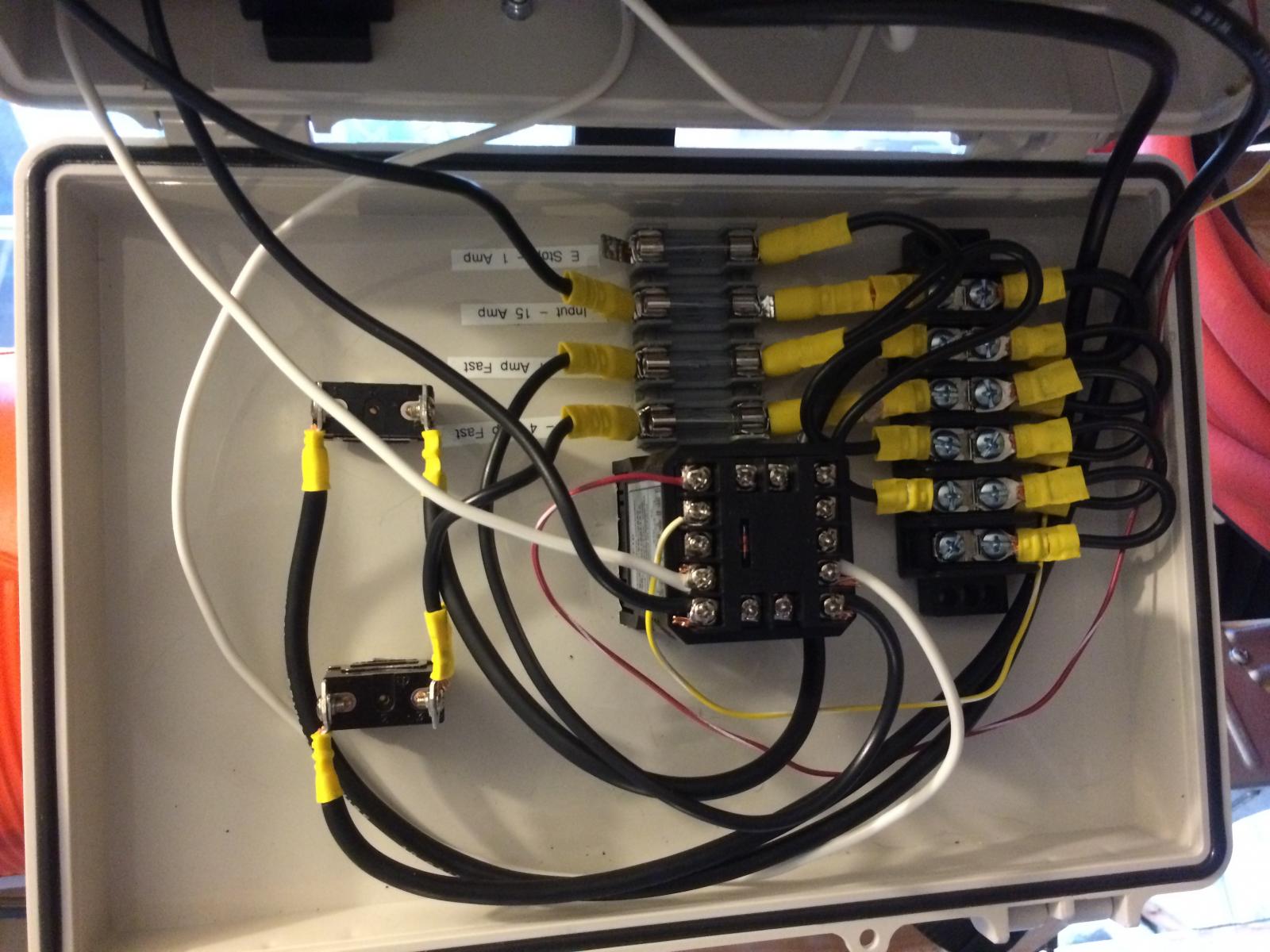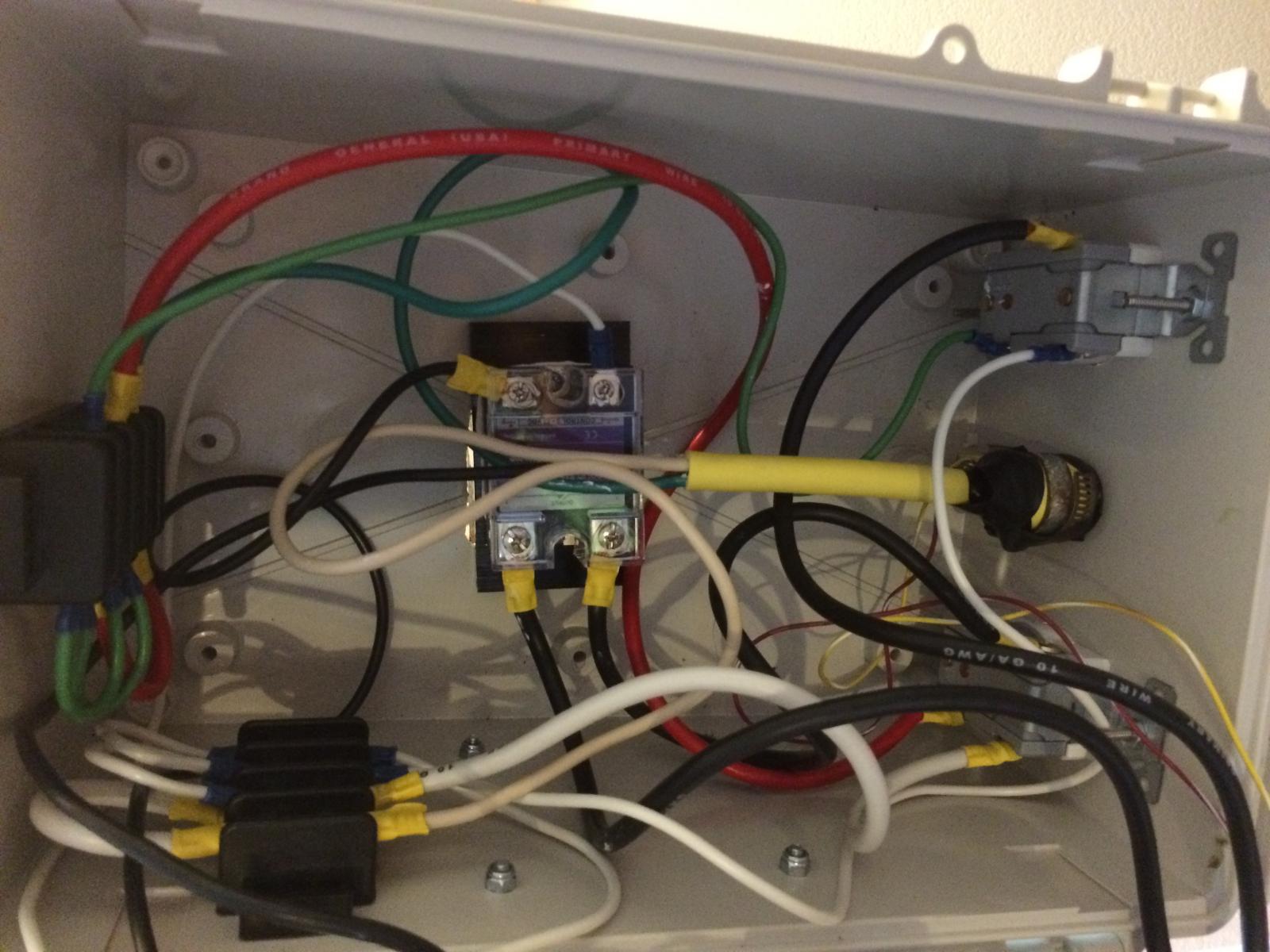Hey guys,
If anyone would be so kind as to take a look, I'm hoping to get feedback on my circuit diagram. I'm feeling fairly confident about it, but this is not an area where I want to screw around. The system will be a small counter top system very similar to jkarp's. My control box will have (2) 20 Amp conventional single socket outlets on the bottom where heater element and pump will plug in. The switches will be basic on/off toggle switches which are rated for 15 amp. I only have 15 amp outlets in my apartment, so I am thinking I should fuse my box with a 15 amp fuse as a fail safe. However, I'm wiring the box for 20 amps, so I could switch out the elements if I have access to more juice. Please excuse my made up circuit symbols.
Thanks for any input.
View attachment S25C-115033012420.pdf
If anyone would be so kind as to take a look, I'm hoping to get feedback on my circuit diagram. I'm feeling fairly confident about it, but this is not an area where I want to screw around. The system will be a small counter top system very similar to jkarp's. My control box will have (2) 20 Amp conventional single socket outlets on the bottom where heater element and pump will plug in. The switches will be basic on/off toggle switches which are rated for 15 amp. I only have 15 amp outlets in my apartment, so I am thinking I should fuse my box with a 15 amp fuse as a fail safe. However, I'm wiring the box for 20 amps, so I could switch out the elements if I have access to more juice. Please excuse my made up circuit symbols.
Thanks for any input.
View attachment S25C-115033012420.pdf
Last edited:







